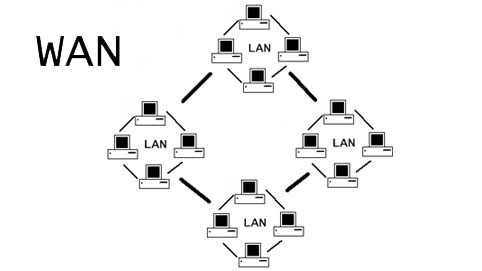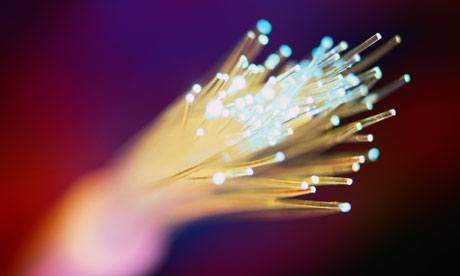7.1 Overview of
E-Business and E-Commerce
Definitions and
Concepts
Electronic commerce
(e-commerce, EC) describes the buying, selling, transferring or exchanging of
products, services or information via computer networks, including the
Internet.
E-business is a
broader definition of EC, including buying and selling of goods and services,
and also servicing customers, collaborating with partners, conducting
e-learning and conducting electronic
transactions within an organization.
The degree of
digitization is the extent to which the commerce has been transformed from
physical to digital.
Pure versus Partial Electronic
Commerce depends on the degree of digitization involved.
The product can be physical or digital.
The process can be physical or digital.
The delivery agent can be physical or digital.
Brick-and-mortar
organizations are purely physical organizations. For example, buy books
at university bookstore.
Virtual
organizations are companies that are engaged only in EC. (Also called pure play).
For example, Order and download book from Amazon.
Click-and-mortar
organizations are those that conduct some e-commerce activities, yet their
business is primarily done in the physical world. I.e. partial EC. (Use
Internet to order physical book from Amazon)
Types of E-Commerce
Types of E-Commerce
E-commerce can be
conducted between and among various parties. These parties include:
Business-to-consumer
(B2C): the sellers are organizations and the buyers are individuals.
Business-to-business
(B2B): both the sellers and buyers are business organizations. B2B represents
the vast majority of e-commerce.
Consumer-to-consumer
(C2C): an individual sells products or services to other individuals.
Business-to-employee
(B2E): An organization uses e-commerce internally to provide information and
services to its employees. Companies allow employees to manage their benefits,
take training classes electronically; buy discounted insurance, travel
packages, and event tickets.
E-Government: the
use of Internet Technology in general and E-commerce in particular to deliver
information about public services to citizens (called Government-to-citizen
[G2C EC]), business partners and suppliers (called government-to-business [G2B
EC]).
Mobile Commerce
(m-commerce) refers to e-commerce that is conducted in a wireless environment.
For example, using cell phone to shop over the Internet.
E-Commerce and
Search
Offline and online brands
initially were kept distinct and then were awkwardly merged.
Initial E-commerce efforts consisted of flashy brochure sites, with rudimentary shopping carts and checkout systems. They were replaced with systems that tried to anticipate customer needs and accelerate checkout.
Initial E-commerce efforts consisted of flashy brochure sites, with rudimentary shopping carts and checkout systems. They were replaced with systems that tried to anticipate customer needs and accelerate checkout.
Major E-Commerce
Mechanisms
Auction: is a
competitive process in which either a seller solicits consecutive bids from
buyers or a buyer solicits consecutive bids from sellers.
Forward auction: are
auctions that sellers use as a channel to many potential buyers.
Reverse auctions:
one buyer, usually an organization, wants to buy a product or a service. The buyer posts a request for quotation (RFQ)
on its Web site or on a third-party Web site.
The RFQ contains detailed information on the desired purchase. Suppliers study the RFQ and submit bids, and
the lowest bid wins the auction.
In general, forward
auctions result in higher prices over time, where reverse auctions result in
lower prices over time.
Electronic
storefront: is a website that represents a single store.
Electronic mall:
(Cybermall or e-mall) is a collection of individual shops under one internet
address.
Benefits and
Limitations of E-Commerce
Benefits to organizations
·
Makes national and international markets more
accessible and by lowering costs of processing, distributing, and retrieving
information.
Benefits to customers
·
Being able to access a vast number of products
and services around the clock.
Benefits to Society
·
The ability to easily and conveniently deliver
information, services and products to people in cities, rural areas and
developing countries.
Technological Limitations
·
Lack of universally accepted security standards
·
Insufficient telecommunications bandwidth
·
Expensive accessibility
Non-technological Limitations
·
Perception that EC is unsecure
·
Unresolved legal issues
·
Lacks a critical mass of sellers and buyers
7.2
Business-to-Consumer (B2C) Electronic Commerce
B2B EC is much
larger than B2C EC by volume, but B2C EC
is more complex. The reason is that B2C involves a large number of buyers
making millions of diverse transactions per day with a relatively small number
of sellers.
Online Service Industries
- Cyber banking
(conducting various banking activities from home, or any similar
locations)
- Virtual banks:
dedicated solely to internet transactions.
- Online securities trading
- Online job
market
- Travel services
- Online
advertising
- Banners
- Pop-up ad
- Pop-under ad
- Spaming
There is to response of spamming :
- Permission
marketing
- Viral
marketing
- Online service involves
customers accessing services via the Web.
Intermediaries or middlemen provide information and/or provide
value-added services.When the function(s) of these intermediaries can be
automated or eliminated, this process
is called
Online Advertising methods
Advertising is an attempt to disseminate information in order to
influence a buyer-seller transaction.
Banners are simply electronic billboards.
Pop-up ad appears in front of the current browser window.
Pop-under ad appears underneath the active window.
Permission marketing asks consumers to give their permission to
voluntarily accept online advertising and e-mail.
Viral marketing refers to online “word-of-mouth” marketing.
Issues in E-Tailing
Channel conflict occurs when manufacturers
disintermediate their channel partners, such as distributors,
retailers, dealers, and sales representatives, by selling their
products directly to consumers, usually over the Internet through electronic commerce.
Multi channeling is a
process in which a company integrates its offline and online channels.
Order fulfillment involves finding the
product to be shipped; packaging the product; arrange for
speedy delivery to the customer; and handle the return of unwanted or defective
products.
Drivers of today’s online advertising
·
The emergence of
“communitainment.”
o Communitainment
is the blending of community, communication, and entertainment into a new form
of online activity driven by consumers.
·
The increasing
popularity of Usites.
·
Mainstreaming of the
Internet.
·
Declining usage of
traditional media.
·
Fragmentation of
content consumption.
·
Consumers are
multitasking and they do not like ads.
The bank predicts that consumers will shift
more than 50% of their content consumption over the next decade to
communitainment formats (e.g., social networking, video, and photo sharing
sites), displacing traditional forms of media content like TV, magazines, and
large Internet sites. This trend presents a major challenge for
advertisers.
7.3 Business-to-Business (B2B) Electronic
Commerce
In business to business, the buyers and
sellers are organizations.
There are several business models for B2B
applications. The major ones are Sell-Side marketplace, Buy-Side marketplace
and electronic exchange.
Sell-Side marketplace
organizations sell their products or
services to other organizations Electronically from their own Web site and/or
from a third-party Web site.
This model is similar to the B2C model in
which the buyer comes to the seller’s site, views catalogs, and places an
order. In the B2B sell-side marketplace,
the buyers are organizations.
Buy-Side Marketplace
organizations sell their products or
services to other organizations Electronically from their own Web site and/or
from a third-party Web site.
This model is similar to the B2C model in
which the buyer comes to the seller’s site, views catalogs, and places an
order. In the B2B sell-side marketplace,
the buyers are organizations.
Electronic Exchanges
Exchanges have many buyers and many sellers.
1. Vertical exchanges connect buyers and
sellers in a given industry.
2. Horizontal exchanges connect buyers and
sellers across many industries and are used
3. mainly for MRO materials.
4. functional exchanges, needed services
such as temporary help or are traded on an “as-needed” basis.
7.4
Electronic Payment
Electronic payment systems enable you to
pay for goods and services electronically.
1. checks (e-checks)
are similar to paper checks and are used mostly in B2B.
2. Electronic credit
cards allow customers to charge online payments to their credit card account.
3. Purchasing cards
are the B2B equivalent of electronic credit cards and are typically used for
unplanned B2B purchases.
4. Electronic cash
a. Stored-Value Money cards
allow you to store a fixed amount of prepaid money and then spend it as
necessary.
b. Smart cards
contain a chip called a microprocessor that can store a considerable amount of
information and are multipurpose – can be used as a debit card, credit card or a
stored-value money card.
c. Person-to-person
payments are a form of e-cash that enables two individuals or an individual and
a business to transfer funds without using a credit card.
7.5 Ethical and legal issues in E-Business
1. Ethical Issues
A. Privacy
E-commerce provides
opportunities for businesses and employers to track individual activities on
the WWW using cookies or special spyware. This allows private/personal
information to be tracked, compiled, and stored as an individual profile. This
profile can be used or sold to other businesses for target marketing or by
employees to aide in personnel management decisions (i.e., promotions, raises,
layoffs).
B. Job Loss
2. Legal Issues Specific to E-Commerce
A. Fraud on the
Internet i.e. stocks, investments, business opportunities, auctions.
B. Domain Names problems
with competition.
C. Cybersquatting
refers to the practice of registering domain names solely for the purpose of
selling them later at a higher price.
D. Domain Tasting is
a practice of registrants using the five-day "grace period" at the
beginning of a domain registration to profit from pay-per-click advertising
E. Taxes and other
Fees when and where (and in some cases whether) electronic sellers should pay
business license taxes, franchise fees, gross-receipts taxes, excise taxes,
…etc.
F. Copyright protecting
intellectual property in e-commerce and enforcing copyright laws is extremely
difficult.





